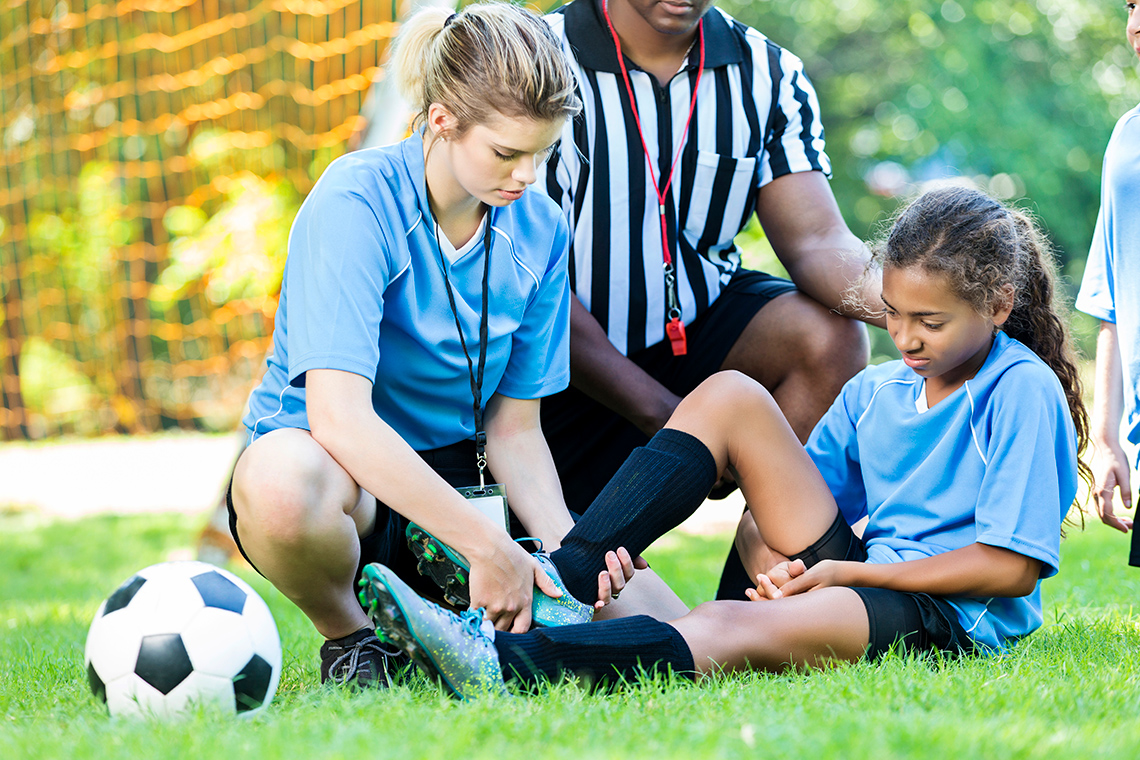Minds On
Understanding concussions

Concussions can be a very serious injury and can take a long time to recover from. It is important to be able to recognize the signs and symptoms of a concussion in order to be able to respond if someone is experiencing symptoms. A concussion is a mild traumatic brain injury, that affects the way that the brain functions.
Let’s use a KWL chart to track your learning.
Complete the KWL Chart in your notebook or using the following fillable and printable document. If you would like, you can use speech-to-text or audio recording tools to record your thoughts.
Press the ‘Activity’ button to access KWL Chart.
| Topic: Understanding Concussions | ||
|---|---|---|
| Know | Want to know | Learned |
Start by filling out the “Know” column with any information you have learned about concussions in the past or assumed about them.
Then, consider any questions or things you would still like to learn about related to concussions and their treatment. Add these to the “Want to Know” section.
Do not fill in the “Learned” section at this point.
Action
What causes concussions?

A concussion is any kind of impact that causes the brain and head to move back and forth quickly.
Question: Why do you think concussions might be more common in some sports, games, or physical activities?
Press ‘Answer’ to access a possible response to check your thinking.
Possible answer: sports such as hockey or soccer involve multiple players moving quickly over a hard surface and making contact with each other.
Signs and symptoms
What are some signs and symptoms of concussions?
Press the following tabs to access the signs and symptoms of concussions.
Some physical signs and symptoms commonly associated with concussions include:
- headaches
- increased tiredness or fatigue (extreme tiredness)
- dizziness
- nausea
- tenderness in the neck area
- sometimes sleep patterns are affected
Some emotional signs and symptoms commonly associated with concussions include:
- feeling sad
- feeling anxious
- difficulty concentrating or remembering
Signs and symptoms can appear right after an injury or they may take hours or days to appear. These signs and symptoms they can be different for everyone.
Just one of these signs or symptoms is enough to suspect a concussion.
Knowledge check
Check your understanding by answering these true/false questions.
Select the correct answer, then press ‘Check Answer’ to see how you did.
Red flag symptoms

Concussions can sometimes be difficult to diagnosis, as there are a wide range of symptoms that vary in severity. Sometimes after a head injury, medical assistance may be immediately required. When assessing a medical emergency involving head trauma, you need to be aware of these red flag symptoms.
Press the following tabs to access the definition of each type of symptom.
These are concussion symptoms that require immediate medical attention, and you should call 9-1-1.
These are concussion symptoms that require immediate rest and care. Stay cautious and vigilant.
These are symptoms not associated with a concussion.
Complete the Concussion Symptoms Severity Chart in your notebook or using the following fillable and printable document. If you would like, you can use speech-to-text or audio recording tools to record your thoughts.
Press the ‘Activity’ button to access Concussion Symptoms Severity Chart.
| Red flag symptoms | Moderate symptoms |
|---|---|
| Word Bank | |
|---|---|
| seizures | numbness in extremities |
| mild dizziness | tenderness in the neck |
| seeing double | problem recognizing people |
| headache | feeling sad |
| repeated vomiting | slurred speech |
| confusion | aggression |
| sleep patterns affected | difficulty waking up |
Press ‘Answer’ to access a filled-out table to check your answer.
| Red flag symptoms | Moderate symptoms |
|---|---|
|
seizures difficulty waking up seeing double problem recognizing people repeated vomiting confusion numbness in extremities slurred speech aggression |
mild dizziness sleep patterns affected headache feeling sad tenderness in the neck |
Recovery

It is important to note that every concussion is unique, and recovery times may vary dramatically. Some concussions may disappear in a few days, and others may take months, or even years. Recognizing the variety of concussion recovery times is essential for supporting individuals who have suffered a concussion.
Rest and relaxation are necessary for recovery. Things like schoolwork, strenuous activity, and screen time may slow down recovery. Sleep is an excellent way for your body to heal. At the same time, too much rest can further impede recovery. It is important that anyone experiencing concussion symptoms, follows the advice of a medical professional.
Click on the advice that is correct, based on the information shared.
Add any new knowledge to your KWL chart.
Situations that lead to injury

There are situations that include the potential risk of injuries such as concussions.
Some of these situations include:
- accidents
- falls
- addiction problems
- mental health issues
- involvement in contact sports
Question: What are some behaviours that can help reduce the risk of concussions?
Record your ideas in a method of your choice.
When you are done, press ‘Answer’ to access some examples of behaviours that can help reduce risk of concussions.
Possible answers:
- wearing protective gear such as helmets
- avoiding conflicts that could lead to violence
- being alert to possible dangers
- avoiding dangerous situations
- being cautious when driving motorized and non-motorized vehicles
- following rules and protocols
Consolidation
Inform your community
Concussion awareness is an important part of prevention and treatment.
Your task is to create a brief public service announcement (PSA) to inform your community about concussions. The PSA should include information on the following:
- causes of a concussion
- symptoms of a concussion
- recovering from a concussion
Your PSA may take the form of a short video, an audio announcement, a poster, an informative pamphlet, or short song, or any other form of your choice.
Use the following checklist to help you create your PSA.
PSA success criteria
Reflection
As you read the following descriptions, select the one that best describes your current understanding of the learning in this activity. Press the corresponding button once you have made your choice.
I feel…
Now, expand on your ideas by recording your thoughts using a voice recorder, speech-to-text, or writing tool.
When you review your notes on this learning activity later, reflect on whether you would select a different description based on your further review of the material in this learning activity.


